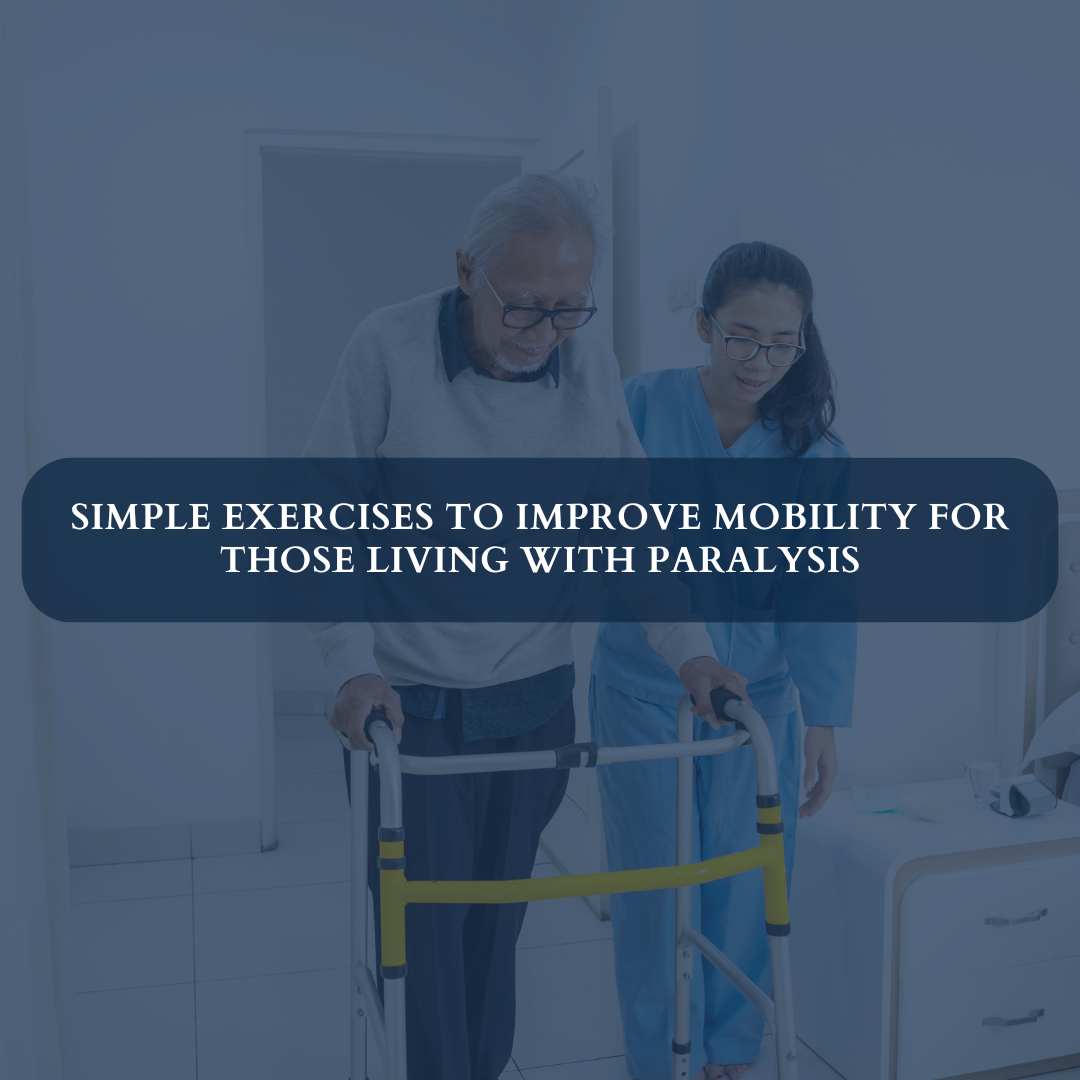Living with paralysis poses unique challenges, but incorporating targeted exercises into your routine can significantly enhance mobility and quality of life. Here, we explore a series of simple yet powerful exercises designed to improve mobility for those with paralysis.
1. Chair Yoga for Flexibility
Chair yoga offers a gentle yet effective way to improve flexibility and range of motion. Simple seated poses like gentle twists, side stretches, and forward bends can help loosen tight muscles and enhance mobility. Incorporating chair yoga into your daily routine can promote relaxation and improve overall well-being.
2. Resistance Band Exercises for Strength
Resistance bands are versatile tools that can be used to strengthen muscles without putting undue stress on joints. For paralysis patients, resistance band exercises can target specific muscle groups, aiding in muscle activation and improving functional movement. Try incorporating exercises such as bicep curls, leg lifts, and shoulder presses for a comprehensive strength-building workout.
3. Aquatic Therapy for Weightlessness
Aquatic therapy harnesses the buoyancy of water to provide a low-impact workout that is particularly beneficial for individuals with paralysis. Water’s natural buoyancy reduces the effects of gravity, allowing for increased freedom of movement and enhanced range of motion. Activities like swimming, water walking, and aqua aerobics can help improve cardiovascular health, muscle strength, and overall mobility.
4. Passive Range of Motion Exercises for Joint Health
Passive range of motion exercises involve gently moving joints through their full range of motion without the assistance of the patient’s muscles. These exercises can help prevent stiffness and maintain joint flexibility, crucial for individuals with paralysis who may be at risk of developing contractures. Regularly performing passive range of motion exercises can help preserve joint health and improve overall mobility.
5. Core Stability Exercises for Balance
Core stability is essential for maintaining balance and stability, especially for individuals with paralysis. Strengthening the core muscles can improve posture, reduce the risk of falls, and enhance overall mobility. Incorporate exercises such as seated twists, pelvic tilts, and abdominal bracing to strengthen the core and improve stability.
6. Standing Frame Exercises for Weight Bearing
Standing frames provide a supportive environment for individuals with paralysis to engage in weight-bearing exercises. Spending time in a standing frame can help prevent muscle atrophy, improve bone density, and enhance circulation. Gradually increasing weight-bearing activities can promote independence and improve mobility over time.
7. Tai Chi for Mind-Body Connection
Tai Chi is a gentle form of exercise that combines slow, flowing movements with deep breathing and mindfulness techniques. For individuals with paralysis, Tai Chi offers a holistic approach to improving mobility, balance, and mental well-being. Practicing Tai Chi regularly can enhance body awareness, reduce stress, and promote relaxation, leading to improved overall mobility and quality of life.
Also Read
Breaking Boundaries: Overcoming Paralysis with Revolutionary Therapies
Incorporating these simple exercises into your daily routine can make a profound difference in your mobility and overall well-being. Remember to consult with a healthcare professional before starting any new exercise program, especially if you have specific health concerns or medical conditions. With dedication and perseverance, you can unlock greater mobility and independence, empowering you to live life to the fullest.
Ready to explore your options for chiropractic and physiotherapy? Contact SwastyaPhysio today to schedule a consultation and discover the best path to your wellness journey. We’re here to support your health every step of the way.
Banaswadi | HBR layout | Kalyan Nagar | Kammanahalli | Horamavu | Hennur






